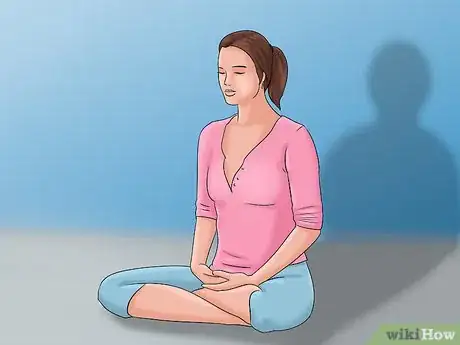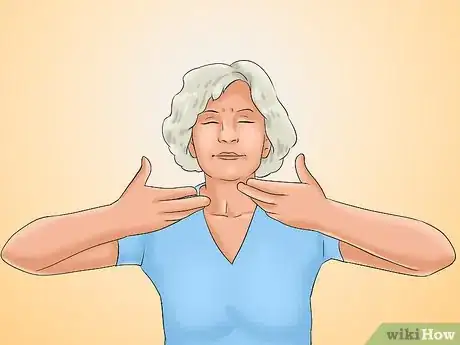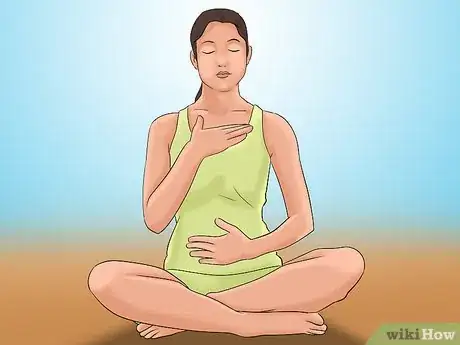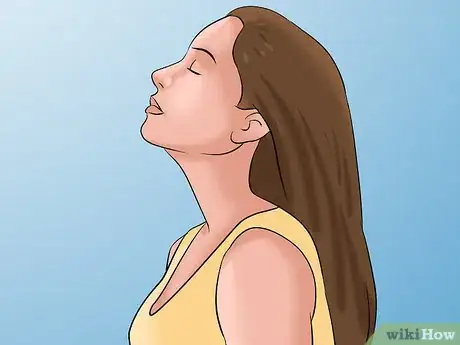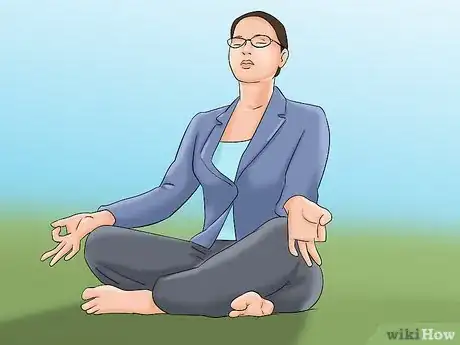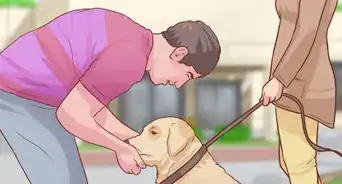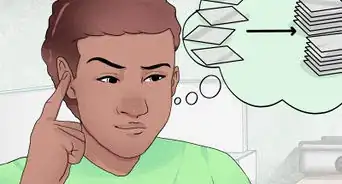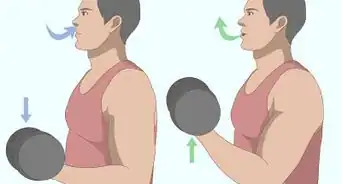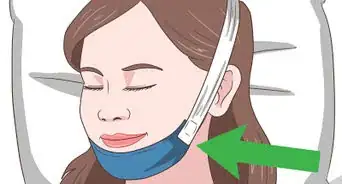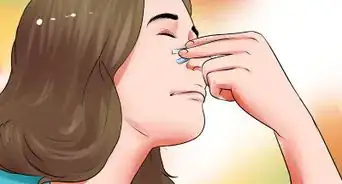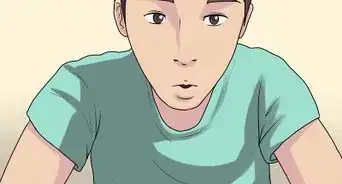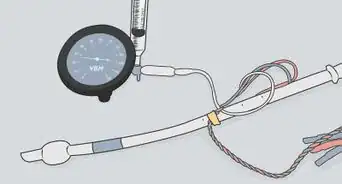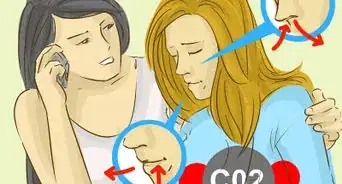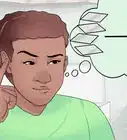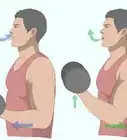X
This article was co-authored by Nataša Pantović Nuit, a trusted member of wikiHow's volunteer community. Nataša Pantović Nuit is a management consultant working in the United Kingdom and Malta. She has a BSc in Economics, and she has written several books on mindfulness and many articles on personal growth topics for the Times of Malta. She has more than 25 years of experience working with large management consulting companies and consulting independently for various Maltese government organizations and for major clients including Vodafone, Barclays Bank, and Safeway UK.
This article has been viewed 71,549 times.
Learn more...
Steps
-
1Sit down with your back straight or lie down on a floor. Relax your body, empty your mind and stay aware of your breath. Benefits of a straight back are: reduced low back pain. fewer headaches. less tension in your shoulders and neck, increased lung capacity.
-
2Inhale. With Yoga Breathing, we take the oxygen into the solar plexus. We are conscious of our breath and we take deep breaths, through the nose. This type of breathing strengthens the body and increases the supply of oxygen to the brain. Breath-in pushing the air into your stomach, feeling the stomach expand. The oxygen goes into the lowest part of your lungs, then the middle, and then the top. Your chest and abdomen will expand. Breathing slowly and deeply brings oxygen to the lowest part of your lungs and exercises your diaphragm. During an inhalation, your diaphragm will move downwards.Advertisement
-
3Exhale. Follow your breath out of your body, empty your stomach first, lower lungs, followed by upper lungs. Allow your shoulders to completely relax.[3] During an exhalation, your diaphragm moves up, compressing the lungs and pushing air out.
-
4Take a yoga breath.[4] This is done with the following rhythm: 7 (seconds or heartbeats) inhalation -1 retention – 7 exhalation – 1 retention. Through the rhythmic breathing, we draw the breath, the life force, into the body through controlled, focused diaphragmatic movement. Through rhythmic repetition we breathe fully and increase our vitality.
-
5Repeat this breathing exercise any time you wish. The yogic breathing teaches us to breathe through the nose, to lengthen our exhalation, increasing our physical and mental health. Practice and this will become your normal breathing, requiring no particular effort. This is how you exercise Mindfulness. Exercise mindfulness to be happier When you take a deep breath in, your heart rate quickens slightly. As you exhale, your heart rate slows. Repeated deep breaths will naturally bring your heart rate more in sync with your breath. This leads your brain to release endorphins, which are chemicals that have a natural calming effect.
-
6The yoga breath will take you into a meditation. Meditate for at least 1/2 an hour. Meditate on Love or Meditate on Consciousness.
Advertisement
References
- ↑ Pantović Nataša, 2015, “Mindful Being Course” (1). [Artof4elements Press, AoL Mindfulness Series Book #4]: ISBN-10: 9995754118
- ↑ https://artof4elements.com/entry/103/yoga-breathing
- ↑ https://www.artof4elements.com/images/2015-10/12-best-mindfulness-exercises.pdf
- ↑ https://www.artof4elements.com/entry/42/how-to-meditate
About This Article
Advertisement
